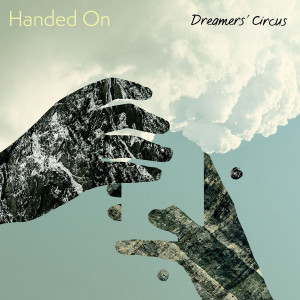 During the enforced downtime of the Covid pandemic, the members of Denmark’s roots music trio Dreamers’ Circus composed a bunch of tunes, which they published as a book called Handed On. Now that they’re able to tour and record again, they’ve chosen a baker’s dozen of them for an album of the same name.
During the enforced downtime of the Covid pandemic, the members of Denmark’s roots music trio Dreamers’ Circus composed a bunch of tunes, which they published as a book called Handed On. Now that they’re able to tour and record again, they’ve chosen a baker’s dozen of them for an album of the same name.
It was back to their roots in many ways, as they drew inspiration from the type of traditional Nordic music that first inspired them to compose some tunes within that tradition, and as they sought a return to the spirit and energy that have made them one of the top Nordic traditional ensembles. I’d say they succeeded on all counts; Nikolaj Busk (piano and accordion), Rune Tonsgaard Sørensen (violin), and Ale Carr (cittern) have crafted a delightful collection that passes on their love of the music to their listeners.
A wooden church is a great place to play this kind of music, and that’s just what these three lads did for this video of one of the tunes, “Tretur,” which finds both Rune and Ale on fiddle while Nikolaj plays accordion.
The album wasn’t recorded there, but rather in the 50 year old Farvemøllen Studio in Copenhagen, where producer Kristian Leth captured their warm and lively sound quite well.
The majority of these 13 tunes are originals, starting with the delightful dance “Uhrbrand’s Cabin” composed by Busk as a tribute to the Uhrbrand family and other residents of Fanø Island and their music; it’s led by Sørensen’s fiddle. It’s the most traditional Danish tune among those composed by the band, although Carr’s Quebecois style tune “The Iron Hall” has strong elements from that tradition — which seems to meld well with the Danish (see my review of Haugaard & Hoirup’s Gaestebud, which included some collaborations with members of Le Vent du Nord).
I’m quite fond of those two tunes, as well as the two traditional ones, the stately hymn “Make High The Gate,” (the tune of which you might recognize as it’s been used as a hymn in various denominations), and “Regnar’s Styk’,” a tune they learned from Peter Uhrbrand of the aforementioned Uhrbrand family of Fanø. (You’ll find mention of him in my review of the Wycocomagh Gathering concert at the 2013 Celtic Colours International Festival in Cape Breton Island, Nova Scotia.)
The rest of the album’s tunes have fluctuating levels of traditional vs. contemporary folk. The cittern melody “The Great Sea” is a contemplative parlor tune, as is the piano tune “The Promenade”; “The Old Goat” a galumphing slice of droning contemporary folk that would fit in with something by The Flecktones, for instance; ditto “Owls In The Bog,” which pairs a very traditional sounding tune with a contemporary rhythmic base and chordal structure; the meandering, improvisational nature of the accordion-centric “Catastrophe” will be familiar to fans of the American band Hawktail, especially their recent collaborations with Väsen.
(GO’ Danish Folk, 2025)
| Website | Facebook | YouTube | Soundcloud |
